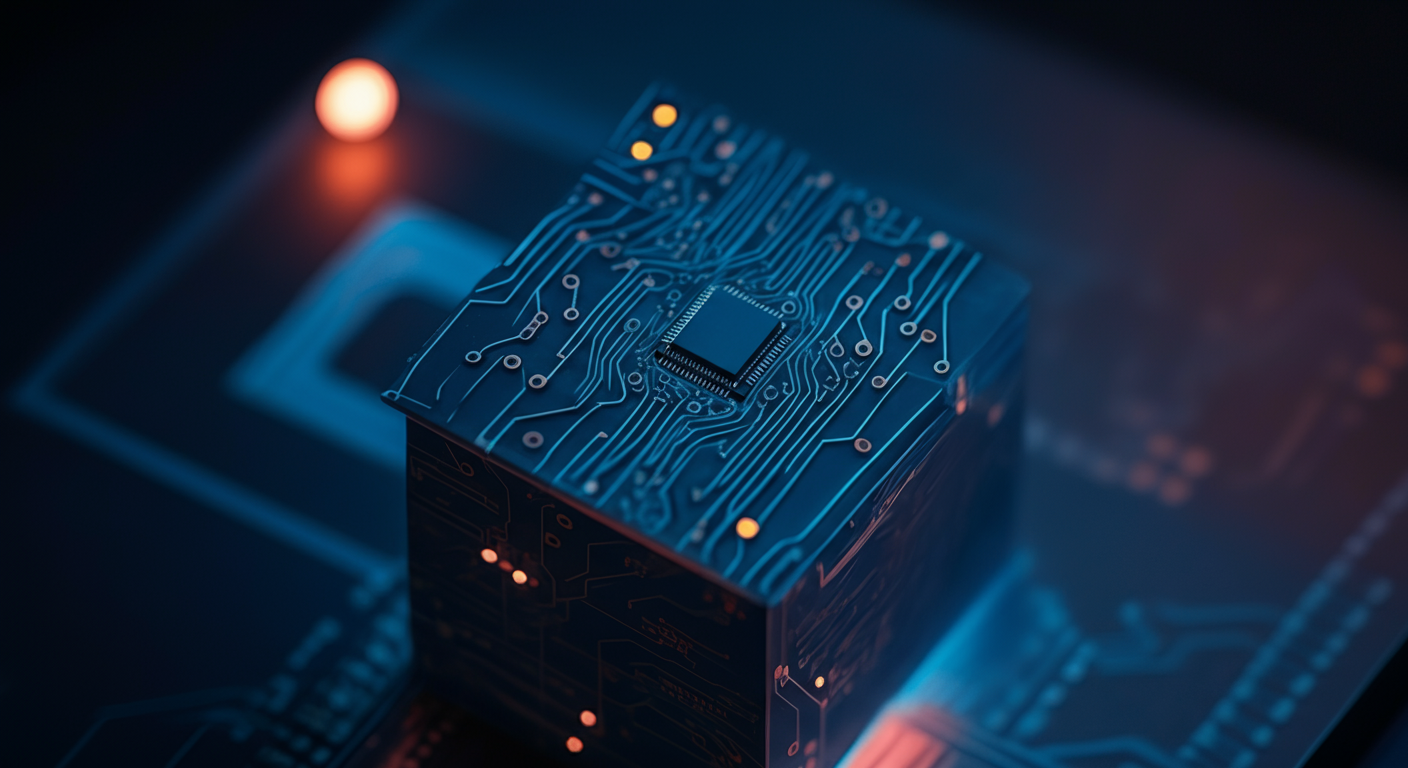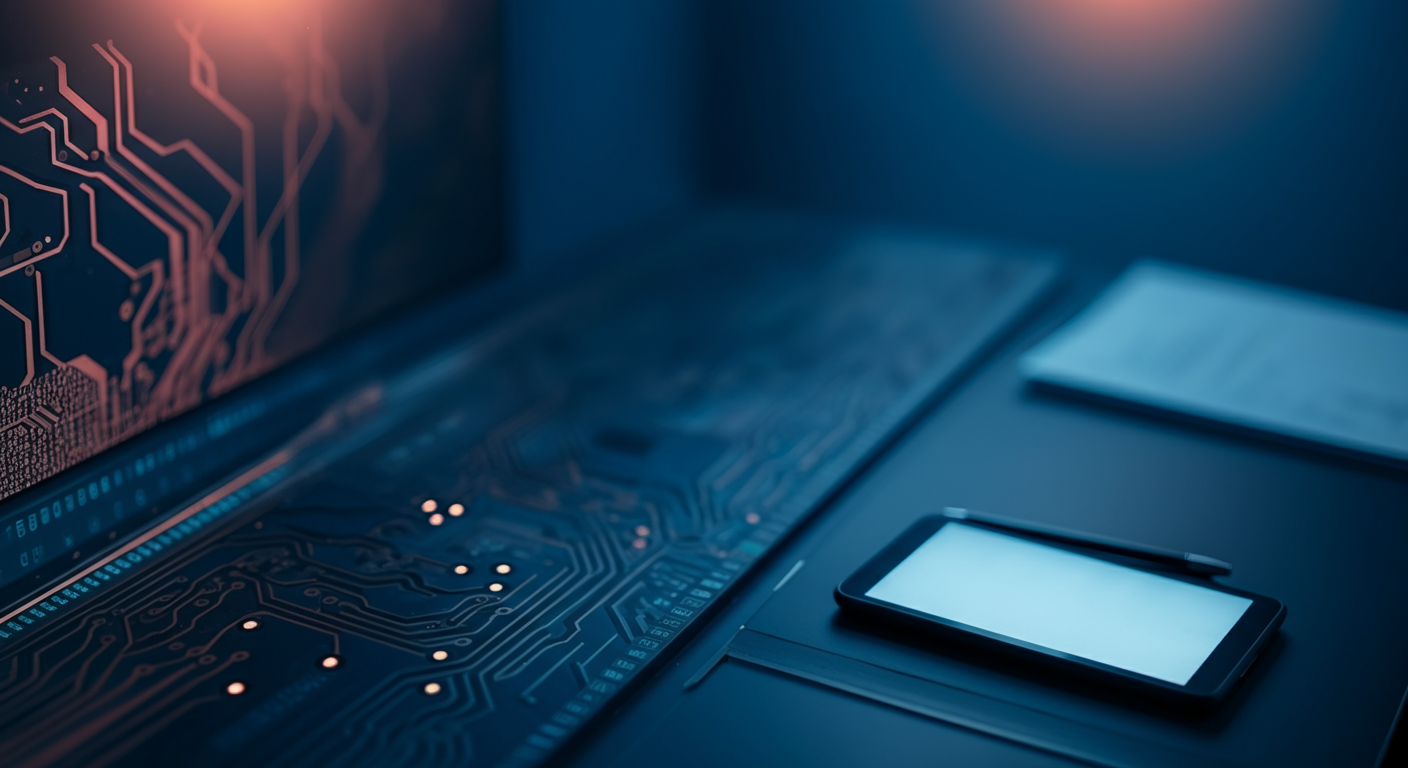Decoding AI GPU Requirements: A Practical Guide for Local AI Power

Decoding AI GPU Requirements: A Practical Guide for Local AI Power
The ability to run AI models directly on personal hardware is increasingly appealing, but understanding the GPU requirements is paramount.
Introduction: Why GPU Matters for Local AI
Running AI locally offers enhanced privacy, reduced latency, and independence from cloud services. However, the 'local AI processing GPU guide' hinges on understanding the GPU's role.
- LLMs and Image Generation Demand GPU Power: Tasks like running Large Language Models (LLMs) and generating images are computationally intensive, heavily relying on GPU processing.
- Practical Focus: This guide focuses on GPU considerations relevant to home users and small businesses, debunking some common myths.
- Specific AI Tasks:
- Training: Developing new models requires substantial GPU resources.
- Inference: Even using pre-trained models benefits from GPU acceleration.
- Fine-tuning: Adapting existing models to specific tasks needs a balance of resources.
Common Misconceptions About GPU and AI
Many believe that only top-tier, expensive GPUs are suitable for AI, but this isn't always true.
While high-end GPUs undoubtedly offer superior performance, many practical AI tasks can be handled effectively by mid-range or even some integrated GPUs. The key is understanding the trade-offs between speed, model size, and desired output quality. For example, you can use smaller, quantized models or optimize inference to reduce the GPU load.
Key Takeaway
Local AI is accessible, but choosing the right GPU depends on your specific needs. Explore a variety of AI tools to find what best suits your needs and budget, starting with understanding what is Artificial Intelligence (AI).
Decoding AI GPU Requirements: A Practical Guide for Local AI Power
Understanding the fundamentals of GPU specifications is crucial for anyone looking to harness local AI power.
Understanding GPU Basics for AI: VRAM, Compute Units, and More

- VRAM (Video RAM): VRAM acts as the GPU's short-term memory, storing AI models and datasets. For example, large language models (LLMs) demand substantial VRAM. Insufficient VRAM leads to slower processing or the inability to load the model at all. If you plan to run demanding AI tasks, prioritize GPUs with ample VRAM. Think of VRAM like the RAM on your computer – the more, the better for handling large and complex tasks.
- Compute Units: These are the parallel processing engines within a GPU. NVIDIA uses CUDA cores, while AMD utilizes stream processors. More compute units translate to faster processing, especially beneficial for the parallel nature of AI calculations. The more CUDA cores or stream processors, the faster the calculations can be performed.
- Clock Speed: Clock speed dictates the operational tempo of the GPU's core. While important, it's not the sole determinant of performance; architecture and compute units play significant roles. A higher clock speed generally means quicker computations, but optimizing code and memory access are equally vital.
- GPU Architectures (NVIDIA, AMD, Intel):
- NVIDIA excels in AI due to its mature CUDA ecosystem and specialized hardware like Tensor Cores.
- AMD offers competitive performance, particularly with its ROCm platform gaining traction.
- Intel is emerging with its Arc GPUs, focusing on integrated solutions.
- Tensor Cores (NVIDIA): These are dedicated hardware accelerators designed to speed up matrix multiplication, a core operation in deep learning. Tensor Cores dramatically improve performance in AI tasks such as image recognition and natural language processing.
Sure, here's the VRAM Needs: Matching Models to Your GPU section for the "Decoding AI GPU Requirements: A Practical Guide for Local AI Power " article in raw Markdown format:
One of the biggest hurdles when setting up local AI is understanding the VRAM requirements of different models.
Estimating VRAM Needs: Matching Models to Your GPU
Choosing the right GPU involves estimating VRAM (Video RAM) needs based on the AI models you want to run, precision levels, and batch sizes. Getting this right is crucial for performance and preventing out-of-memory errors.
Here's a simplified view of Large Language Model VRAM needs. Keep in mind these are estimates:
| Model | Parameters | FP16 | INT8 |
|---|---|---|---|
| Llama 2 | 7B | 14 GB | 7 GB |
| Llama 2 | 13B | 26 GB | 13 GB |
| Mistral 7B | 7B | 14 GB | 7 GB |
Note: Using quantization techniques like INT8 significantly reduces VRAM usage, allowing you to run larger models on less powerful GPUs.
VRAM for Image Generation
Image generation models also have unique VRAM demands. Stable Diffusion, for instance, requires more VRAM as image resolution and batch size increase.- Higher resolution images demand more VRAM.
- Increasing the batch size (number of images generated simultaneously) multiplies VRAM usage.
Practical Tips for Reducing VRAM Usage
If you find yourself bumping against VRAM limits, here are some optimization techniques:
- Quantization: Convert model weights to lower precision formats (e.g., FP16 to INT8).
- Offloading Layers to CPU: Move some model layers from the GPU to system RAM (CPU).
- Reduce Batch Size: Decrease the number of images or text sequences processed simultaneously.
In summary, estimating VRAM needs requires understanding the interplay between model size, precision, and batch size. By implementing the outlined techniques, you can run complex AI models locally. Next, we’ll explore specific GPU recommendations tailored for different budgets and AI tasks.
Decoding AI GPU Requirements: A Practical Guide for Local AI Power
Beyond VRAM isn't the whole story – GPU processing power is crucial for local AI.
Beyond VRAM: The Importance of GPU Processing Power
While VRAM often gets the spotlight, GPU processing power, measured in TFLOPS (teraflops), significantly impacts the speed of AI tasks, especially during inference and training. Think of VRAM as the artist's canvas size, and processing power as the speed at which they can paint. More processing power directly translates to faster execution of complex calculations.
Benchmarking and Real-World Examples
AI GPU benchmark comparison is essential.
Comparing GPUs using benchmarks like MLPerf provides a practical understanding of their performance. For instance, an NVIDIA RTX 4090 excels in both VRAM and processing power, making it suitable for demanding tasks, while a lower-end card might suffice for simpler workloads.
- Real-time Object Detection: Requires a GPU with strong processing power to quickly analyze video frames.
VRAM vs. Processing Power: Finding the Balance
There's a trade-off between VRAM and processing power. A GPU with abundant VRAM but limited processing capabilities will struggle to keep up with computationally intensive tasks. Conversely, a powerful GPU with insufficient VRAM might not be able to load large models.
| GPU | VRAM | Processing Power (TFLOPS) | Ideal Use Case |
|---|---|---|---|
| RTX 4090 | 24 GB | 82.6 | Large-scale training, real-time inference |
| RTX 3060 | 12 GB | 12.7 | Moderate training, less demanding inference |
| Integrated GPU | Varies | < 5 | Basic AI tasks, experimentation |
Recommendations for Specific AI Tasks
- Real-time inference: Focus on GPUs with high clock speeds and optimized architecture.
- Large-scale training: Prioritize both VRAM and processing power.
- Experimentation: Entry-level GPUs or cloud-based solutions are sufficient.
Decoding AI GPU Requirements: Optimizing GPU Usage
Unlocking the full potential of local AI power hinges on optimizing how software and configurations leverage your GPU.
Driver Installation and Configuration
Installing and configuring the right drivers is crucial for effective GPU utilization.- NVIDIA CUDA: Follow NVIDIA's CUDA installation guide for your specific operating system. CUDA is a parallel computing platform and API developed by NVIDIA, enabling significant increases in computing performance by harnessing the power of GPUs.
- AMD ROCm: AMD's ROCm platform provides an alternative for AMD GPUs. Check compatibility and follow the official documentation for installation.
- Always ensure your drivers are up-to-date to benefit from the latest performance improvements and bug fixes.
Maximizing GPU Utilization with AI Frameworks
AI frameworks are pivotal for managing GPU workloads.- TensorFlow and PyTorch: These leading frameworks offer tools to allocate and manage GPU resources effectively. Leverage their GPU-specific APIs to ensure models and data are loaded onto the GPU. TensorFlow is an open-source machine learning framework that facilitates the creation of machine learning and deep learning models. PyTorch is an open-source machine learning framework that accelerates the path from research prototyping to production deployment.
- CUDA and GPU Acceleration Libraries: Understand the role of CUDA and similar libraries in accelerating computations. They act as bridges between frameworks and GPU hardware.
Monitoring and Bottleneck Identification
Monitoring GPU usage is critical for performance tuning.- Use tools like
nvidia-smi(for NVIDIA) orrocm-smi(for AMD) to monitor GPU utilization, memory usage, and temperature in real-time. - Identify bottlenecks by analyzing GPU utilization during training and inference.
- Consider techniques for parallelizing AI workloads across multiple GPUs to maximize throughput. This is especially important for large models and datasets.
Here are some case studies demonstrating the power of local AI implementations.
Local LLM Content Creation
Imagine a content creator who values privacy and wants to avoid API costs. A DIY AI workstation build using a high-end NVIDIA RTX card can locally run open-source LLMs like LlamaIndex, providing a secure and cost-effective solution for generating blog posts, social media content, and marketing copy. The initial investment in hardware pays off through reduced ongoing expenses and increased control over data. This approach also mitigates reliance on third-party services.GPU-Accelerated Video Editing
Video editors often struggle with rendering times. By using a powerful GPU, video editing workflows can be significantly accelerated."Switching to a local GPU-accelerated system reduced my rendering times by 60%, which is a game-changer," notes one video professional.
AI-powered video editing features, like object tracking and scene detection, benefit significantly from local GPU acceleration, enhancing productivity and creativity.
Indie Game Development
Indie game developers can leverage local AI to create smarter, more dynamic game experiences without relying on external servers. This includes generating textures, animating characters, and designing levels. A well-configured Software Developer Tools setup with a dedicated GPU facilitates rapid prototyping and iteration, providing a competitive edge in a crowded market. Cost considerations are crucial, but a carefully chosen hardware configuration can deliver significant ROI.Troubleshooting Advice
- Driver Issues: Ensure drivers are up-to-date.
- Resource Management: Monitor GPU usage to avoid bottlenecks.
- Compatibility: Verify that software supports the GPU.
Future Trends: The Evolving Landscape of AI GPU Requirements
The demand for local AI processing power is only going to intensify, driven by larger models and more sophisticated applications.
Emerging GPU Technologies
"The future of AI hardware is about specialization and efficiency."
New GPU architectures are constantly emerging, such as chiplet designs that allow for greater scalability and flexibility. These architectures enhance performance and lower costs. For example, companies are actively developing specialized AI chips that offload specific tasks from the CPU, improving overall efficiency.
The Cloud's Influence on Local GPU Needs
While cloud-based AI services offer immense computational power, they don't eliminate the need for local GPUs. In many cases, users need local processing for privacy reasons or to achieve real-time responsiveness. Consider ChatGPT, while accessible through the cloud, running similar LLMs locally offers greater control and reduces latency.
Specialized AI Accelerators
AI accelerator cards for home use are increasingly becoming viable. Google's TPUs, while primarily used in data centers, demonstrate the potential of specialized hardware. As these AI accelerator cards for home use become more affordable and accessible, they could revolutionize local AI processing.
Predicting Future Model Sizes

AI model sizes are expected to continue growing exponentially, demanding more powerful GPUs. Future models might require hundreds of gigabytes of GPU memory.
- Larger models mean greater GPU requirements: As AI models increase in size and complexity, the need for powerful GPUs to train and run them will only grow.
- Differentiable Programming: New programming paradigms like differentiable programming could change GPU usage patterns, potentially streamlining computations and optimizing resource allocation.
- Impact on AI applications New AI applications that utilize these trends will be showcased on platforms such as Best AI Tools, which provides resources for navigating the growing landscape of AI.
Decoding AI GPU Requirements: A Practical Guide for Local AI Power
Choosing the right GPU for local AI development is more nuanced than just comparing specifications. It's about aligning hardware capabilities with real-world constraints and future-proofing your setup.
Power Consumption and Cooling
Power draw significantly impacts running costs and cooling needs.
High-end GPUs demand substantial power, potentially requiring PSU upgrades and efficient cooling solutions. Consider ambient temperature and case airflow. Select components designed for sustained performance without thermal throttling.
Hardware & Software Compatibility
- Ensure compatibility with your existing system (CPU, motherboard, RAM).
- Verify driver support and software frameworks (TensorFlow, PyTorch) work seamlessly.
- Consider the Software Developer Tools that will allow your AI models to run smoothly.
Availability and Pricing
- GPU availability fluctuates, affecting prices dramatically.
- Monitor pricing trends using resources like Pricing Intelligence for cost-effective decisions.
- Consider the best AI GPU for budget options and weigh cost against performance gains.
Long-Term Support
- Prioritize vendors with robust driver updates and long-term support.
- Regular updates ensure compatibility with evolving AI frameworks and libraries.
Resale Value
- Consider resale value if you plan to upgrade frequently.
- Popular, well-supported GPUs generally hold their value better.
Decoding AI GPU Requirements: A Practical Guide for Local AI Power helps you navigate the complexities of GPU selection for local AI.
Recap: Key Takeaways
- Understanding GPU architecture, memory, and compute capabilities is crucial for AI.
- Different AI tasks (like image generation, NLP) have varying GPU demands.
- Balancing performance, cost, and power consumption is key to an efficient setup.
Why GPU Understanding Matters
Choosing the right GPU significantly impacts the speed and feasibility of your getting started with local AI projects.
For example, image generation with models like Stable Diffusion benefits from high VRAM, while conversational AI models like ChatGPT can benefit from strong compute.
Embrace Experimentation
Don't be afraid to test different GPUs and configurations to find what works best for your needs. Consider leveraging cloud platforms for initial testing before committing to a hardware purchase.- Track performance metrics like inference time and throughput.
- Analyze resource utilization (GPU usage, VRAM consumption).
Join the Community
Your journey doesn't end here; it's just beginning! Share your findings, ask questions, and contribute to our growing knowledge base at best-ai-tools.org. Your experiences can help others succeed in their own local AI deployments.Conclusion: Empowering Your Local AI Journey with the Right GPU. Now armed with insights into local AI GPU requirements, you're ready to harness AI power on your own terms.
Keywords
GPU for AI, AI GPU requirements, Local AI processing, VRAM for AI models, AI GPU benchmarks, CUDA for machine learning, GPU for deep learning, AI model inference, GPU memory, Stable Diffusion GPU, LLM GPU requirements, AI hardware, GPU optimization, Machine learning hardware, Deep learning GPU
Hashtags
#AIHardware #GPUforAI #LocalAI #MachineLearning #DeepLearning
Recommended AI tools

Your AI assistant for conversation, research, and productivity—now with apps and advanced voice features.

Bring your ideas to life: create realistic videos from text, images, or video with AI-powered Sora.

Your everyday Google AI assistant for creativity, research, and productivity

Accurate answers, powered by AI.

Open-weight, efficient AI models for advanced reasoning and research.

Generate on-brand AI images from text, sketches, or photos—fast, realistic, and ready for commercial use.
About the Author

Written by
Regina Lee
Regina Lee is a business economics expert and passionate AI enthusiast who bridges the gap between cutting-edge AI technology and practical business applications. With a background in economics and strategic consulting, she analyzes how AI tools transform industries, drive efficiency, and create competitive advantages. At Best AI Tools, Regina delivers in-depth analyses of AI's economic impact, ROI considerations, and strategic implementation insights for business leaders and decision-makers.
More from Regina

